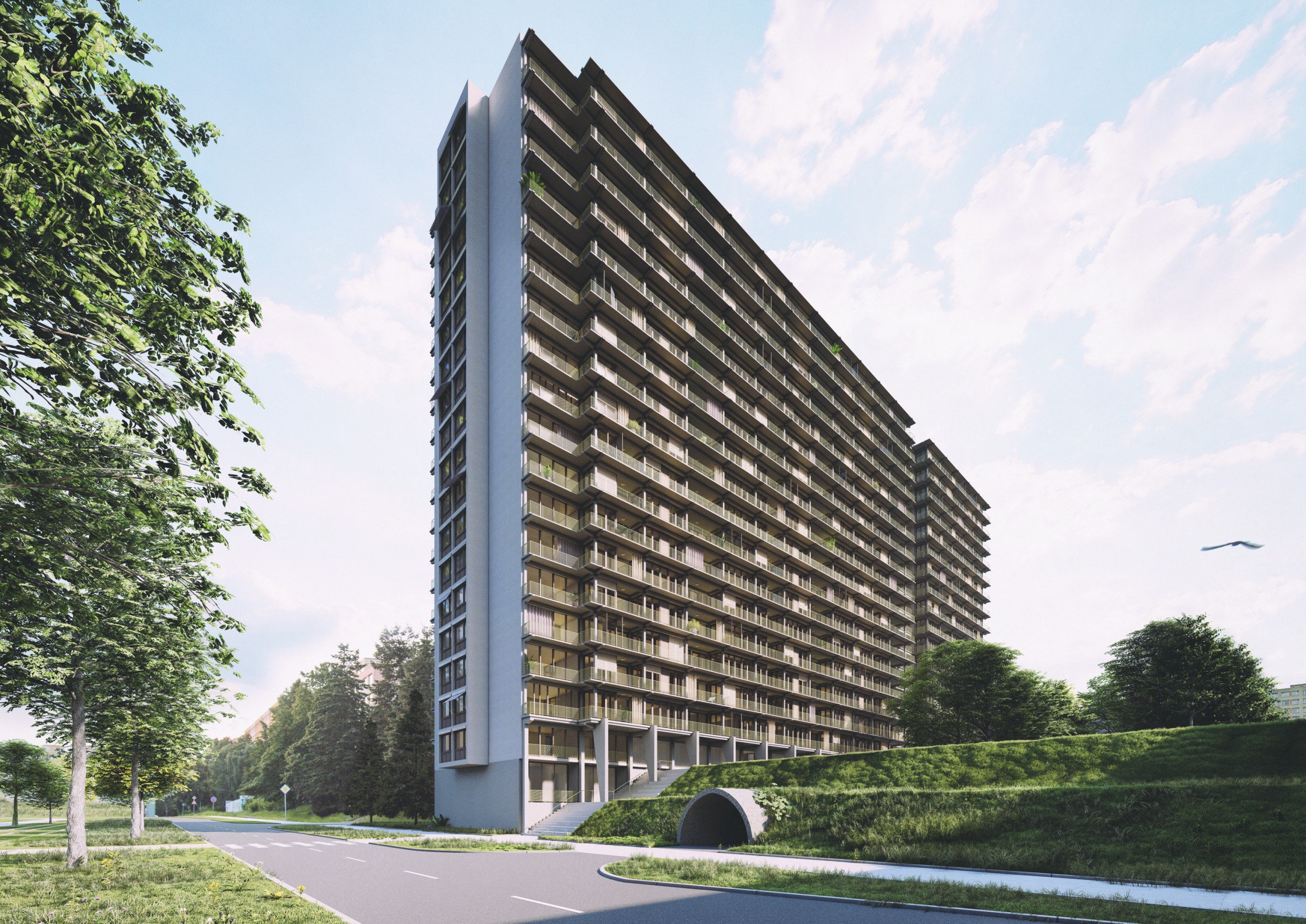Alžběta Pomahačová↓
Gallery
Studies
| 2019–2021 | Architecture, AVU (Miroslav Šik) |
| 2019–2020 | stáž na UMPRUM, Keramika a porcelán (M. Velčovský a M. Pekař) |
| 2013–2018 | FA TUL (bakalářský studijní program) |
| 2017 | stáž na škole KU Leuven Faculteit Architectuur Gent |
About the work
Housing Estate City. Prefabbed Houses
Alžběta Pomahačová’s diploma thesis is part of the joint interest of the Architecture studio’s students in the phenomenon of Czechoslovak modernist housing estates. Her proposal is a snippet of a set of interventions that, on the example of Prague’s Bohnice, reveal the general issues related to mass housing construction and its unexpected qualities as well as the possible potential of the largest local experiment in housing. The project follows the example of a prefabbed house T1 to examine the degree and quality in which the utopia of modern living for all had been realized. This helps Pomahačová explore the possibilities of reconstructing the house within the limits of the cultural and social context of the given housing estate, which are, however, influenced by the original construction and the broader context of the Prague skyline.
Pomahačová’s decision to address the subject of home arrived after taking a closer look at the housing estate and it was affected by several aspects. First, it was the authentic and immediate impression of the house after accidentally encountering it. Second, there came the intense experience inside the house and the view out of its windows into the suburban landscape that surrounds the ring of Prague housing estates. And the main impulse was the ambition to study the initial motivations of a modernist housing estate on a particular example. The diploma thesis was inspired by the need to confront its current aesthetic and structural condition and the qualities of its private and common spaces with today’s housing requirements. Pomahačová wonders: What actually is a contemporary home? She asks: What is missing and what is redundant? She subsequently demolishes, adds, extends, preserves, and cleans. The crucial moment for her is the possibility to take a breath in the grid of panel walls, and the residents’ chance at getting a new space the name of which does not condition a specific event. The new concrete prefabricated structure will provide what is missing and will resurface what has long been hidden – the panel walls, the rhythm of home. The author cleanses the house from the old and cheap deposits, and brings in a mix of functions and inhabitants. This results in an informal space for everyday life, a luxury based on simplicity, a new quality of old living.

